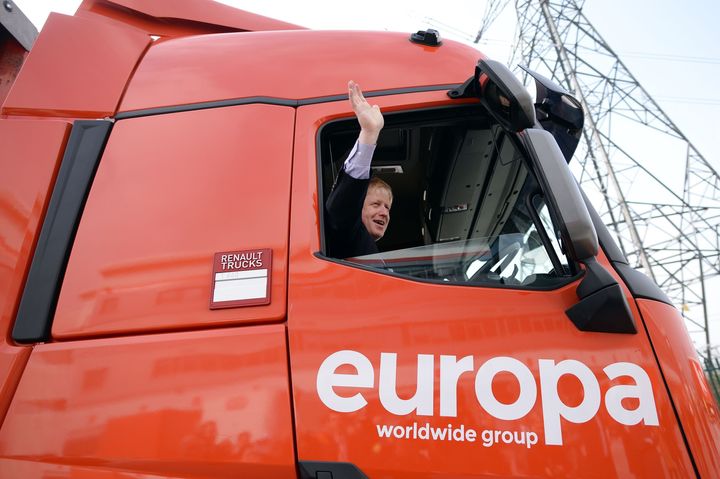
Theresa May is in trouble.
Her favoured option for a post-Brexit customs deal with the EU has been shot down by the most powerful members of her Cabinet.
Boris Johnson has described the “customs partnership” proposal – which would see the UK collect tariffs on goods on behalf of the EU - as “crazy”.
Johnson and other Brexiteers fear it would leave the UK tied to rules decided by Brussels, but with Britain out of the EU it would have no say on those regulations.
But the option favoured by the Foreign Secretary – “maximum facilitation” – is opposed by other members of the Cabinet. Business Secretary Greg Clark is one who fears that relying on technological advances to speed up customs checks will never deliver the frictionless processes needed to keep the UK as an attractive place to do business.
The cabinet sub-committee has now been divided into two smaller groups to thrash out the pros and cons of the schemes but time is ticking away for May to get agreement on how to move forward, with the EU and UK both committed to getting a Brexit-deal drawn up by October.
Here’s what you need to know about the different customs plans.
Customs Union

Under the current arrangement, the UK applies the same tariffs on imports as the rest of the EU – and is charged the same tariffs by other countries.
Advantages:
By working together as a bloc of 500million people, many feel the EU is able to strike better trade deals with other markets than individual countries would alone.
The simplicity of having one set of rules gives a degree of simplicity for traders.
Disadvantages:
A trade deal that might be good for one country in the customs union might not be good for another.
By locking all the countries together, it prevents individual states from pursing trade policies which might suit their economic needs.
Countries are unable to strike their own trade deals.
Customs Partnership

This arrangement would see the UK collect tariffs on behalf of the EU, at the rate set by Brussels. However, if the particular product is only destined for the UK market, the business would have to apply to get some money back if the British tariff is lower.
Advantages
This system would see business who want to use the UK as a launch pad into the EU only having to pay tariffs once.
It will enable UK businesses to continue exporting into the EU in much the same way as they do now.
Disadvantages
Business would have to spend time chasing rebates.
There is concern that the UK would need to align itself closely to the EU’s rules and regulations on products – the Single Market – in order to make this a viable option.
The UK will have no say on those rules after Brexit.
Maximum Facilitation - ‘Max Fac’

The UK would be completely free from the EU’s customs union in this scenario, meaning businesses would benefit from lower tariffs as soon as trade deals are signed. In order to keep trade as frictionless as possible with the EU, customs technology would be developed to allow checks to be carried out swiftly and away from ports.
Advantages
The UK could make itself an attractive place to do business by agreeing lower trade tariffs with countries than the EU operates.
It would have no ties to Brussels.
Disadvantages
Many are dubious that such technology exists that will prevent long checks at Britain’s ports, and there are fears that just a few minutes’ delay will see queues of lorries building up for miles in the run-up to docks.
This system is also incompatible with the Government’s desire to have no hard border with Ireland, as in order to properly implement it checks will need to take place on lorries and other vehicles to make sure smuggling is not taking place.
Would make the UK a less attractive place for foreign businesses who want to us the country as a springboard into the EU market
